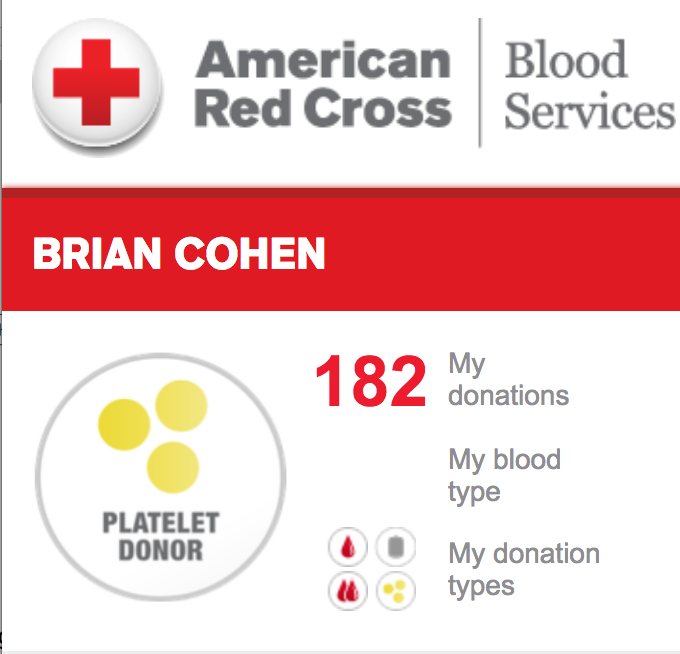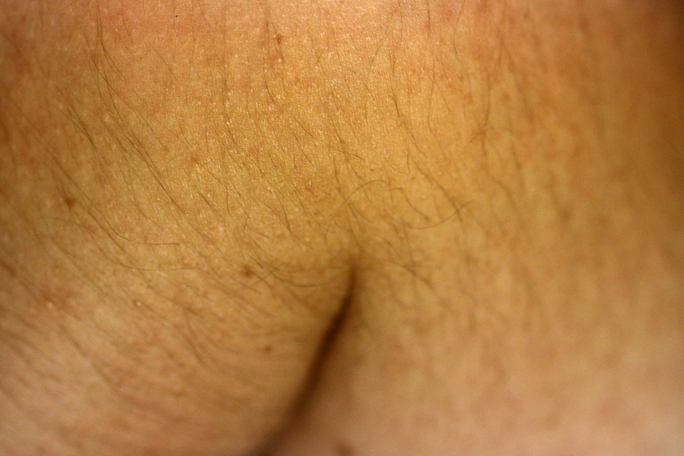I admit it. I sunk to a new low.
I do not normally do things like this; but I decided to show off parts of my body which I have never shown in public before in order to do my part in the 2019 Novel Coronavirus — which is also known as COVID-19 or 2019-nCoV — pandemic.
Revealing Parts of My Body to Help With Pandemic of 2019 Novel Coronavirus
Perhaps it is the hidden kinky side in me; but showing off these parts of my body had me tingling just a little bit — especially in my lips…
…so — without further ado — here are the photographs of the parts of my body which I have never revealed publicly until now.

Ooohh…that felt so, sooo good…
…so much so that — dare I really do this? — here is a close-up view of two of those body parts.

Doing this photography shoot was really hot!
But Seriously…
Everything you have read until now was the truth: the body parts I revealed publicly were my blood, my plasma, and my platelets. You see, I have been donating platelets on a regular basis over the years with a process known as apheresis or pheresis.
This video from the American Red Cross explains the process in 106 seconds.
Apheresis is the process of extracting platelets from your body. Depending on factors pertaining to your body and whether you give a single, double, or triple donation, the apheresis process takes between two hours and four hours to complete from start to finish.
Platelets are tiny cells in your blood which form clots and stop bleeding. For millions of people, they are essential to surviving and fighting cancer, chronic diseases, and traumatic injuries. Someone needs platelets every 15 seconds. Platelets must be used within five days — meaning that new donors are needed every day. One platelet donation can save the lives of as many as three people.
My Experiences With Donating Platelets

When combined with the gallons of whole blood and double donations of red blood cells over the years, I have donated mostly platelets at least 182 times to the American Red Cross…
…and that does not include all of my donations to the New York Blood Center, where my blood was diagnosed as CMV-, which means that my blood does not contain cytomegalovirus.
Cytomegalovirus is a flu-like virus which is generally harmless to adults — but it can potentially be fatal to babies. Most adults are exposed to cytomegalovirus at some point in their lives. As with other viruses, once someone has had cytomegalovirus, his or her body retains the antibodies.
As for my lips tingling, that is a common occurrence when donating platelets. A slight tingling sensation is a mild response to the anticoagulant used when the blood is returned to your body — and the sensation can quickly be alleviated with calcium via use of a calcium supplement.
When I say that the “photography shoot” was hot — well…that is because the room was indeed purposely hot while I was donating platelets because many donors will feel chilly as their fluids are returned to their bodies. Blankets are often distributed to platelet donors for increased comfort; but my body is naturally hot blooded, so I rarely ever need a blanket.
Critical Shortage: Consider Donating Blood, Platelets, Plasma, or Red Blood Cells
The American Red Cross now faces a severe shortage of blood and blood products due to an unprecedented number of blood drive cancellations during the current 2019 Novel Coronavirus pandemic. Healthy eligible individuals are urgently needed to book an appointment now to donate blood and blood products to help patients who count on blood to literally save their lives.
You should not hesitate to give or receive blood, as donating blood is a safe process. Watch this video on the safety and need for blood donations…
…but please postpone your donation for 28 days following travel to China and its special administrative regions, Hong Kong and Macau, as well as Iran, Italy and South Korea; or if you have been diagnosed with — or have had contact with anyone with — a suspected or confirmed case of 2019 Novel Coronavirus. Find out about what to know about 2019 Novel Coronavirus and the enhanced blood donation safety protocols of the American Red Cross.
Keep in mind that as a frequent traveler, I had not been able to donate any blood products — including platelets — at times, depending on where I had traveled within the prior year. For example, I traveled to Panama several years ago and I was not allowed to give blood or platelets for twelve months because I was informed by a representative of the American Red Cross that Panama was one of the countries identified by the Centers for Disease Control and Prevention as an area where malaria is present everywhere. Because blood is not tested for malaria, any person who has traveled to an area known to have malaria present is considered a risk — even if the person may not be suffering from the effects of malaria — and will therefore be denied the opportunity to donate blood for twelve months…
…and in 2014 — instead of the entire country invalidating the donation of blood products — Panama became one of those countries where the presence of malaria varied; so that means that depending on where you have been in Panama determined whether or not you were able to donate blood or any of its components.
To complicate the frustration of travelers who want to donate blood or blood components, the list of countries can change. Ensure that you click on the map above to see its latest iteration before you travel to determine if you will be eligible to donate blood and blood components when you return…
…but even then, I would advise calling the American Red Cross — or wherever you donate your blood or its components — to ensure that you get information specific to you and your travels as to whether or not you can donate.
There are other factors which may disqualify you from donating blood and blood components, according to the eligibility requirements of the American Red Cross.
Other Articles Pertaining to the 2019 Novel Coronavirus Pandemic
This article is the latest in a series pertaining to the 2019 Novel Coronavirus in an effort to get the facts out with information derived from reliable sources — as well as attempt to maintain a reasoned and sensible ongoing discussion towards how to resolve this pandemic.
Other articles at The Gate which pertain to the 2019 Novel Coronavirus include:
- 2 Reliable Resources of Countries With Travel Entry Restrictions Due to 2019 Novel Coronavirus
- Most Restaurants Now Offer Free Delivery. What About the Gratuity?
- Most Trusted Traveler Programs Enrollment Temporarily Suspended Due to 2019 Novel Coronavirus
- Where Can You Find Gasoline for 99 Cents Per Gallon in the United States?
- Have We Become a Society of Wimps Addicted to Drama?
- Four Overused Terms of the 2019 Novel Coronavirus Era
- Several Rental Car Companies Waive Young Adult Fees Due to 2019 Novel Coronavirus
- National Park Service Suspends All Entrance Fees Due To Coronavirus Pandemic
- Passport Services Delayed Beyond 8 Weeks; Expedited Passport Services Suspended Indefinitely
- Global Level 4 Health Advisory Issued by Department of State of the United States
- What is Wrong With This Photograph? Part 30: Coronavirus Edition
- Countries With Travel Entry Restrictions Due to 2019 Novel Coronavirus: An Updated Comprehensive List
- 2019 Novel Coronavirus: Should You Travel Within the United States?
- $250 Billion Bailout Requested by Lodging Companies
- Countries With Travel Entry Restrictions Due to 2019 Novel Coronavirus: A Comprehensive List
- $50 Billion Bailout Requested by Airlines; Trump to “Back the Airlines 100%”
- Global Level 3 Health Advisory Issued by Department of State of the United States
- All Domestic Travel Banned For Personnel of Department of Defense of the United States
- March 15 2020: Checking Back In on 2019 Novel Coronavirus — My Opinions, If Anyone Cares
- Hotel Deploys Robots to Sanitize and Disinfect Rooms
- Ireland and the United Kingdom Added to Suspension for Most Foreign Nationals For 30 Days From Europe to the United States
- Change Fee and Cancellation Fee Policies and Waivers of 46 Airlines Due To 2019 Novel Coronavirus
- Up to 12 Ounces of Hand Sanitizer is Permitted Through Airport Security Checkpoints
- I Swear, If I Receive One More Message About How My Health and Safety are Their Top Priority…
- Four Reliable Resources For Travel and the 2019 Novel Coronavirus
- Just Shut Down the Entire Planet. Problem Solved?
- Stop the Hyperbole: Travel is NOT Banned Between the United States and Europe…
- Travel From Europe to the United States Suspended for Most Foreign Nationals For 30 Days
- My Unproven Secret to Not Contracting a Virus in Years
- Pandemic of 2019 Novel Coronavirus Declared by World Health Organization
- Official Warning Issued Against Travel by Cruise Ship Due to 2019 Novel Coronavirus by the Department of State of the United States
- Now the Entire Country of Italy is Under Quarantine
- 16 Million People Quarantined in Northern Italy
- Are Masks Effective Against 2019 Novel Coronavirus That People are Stealing Them?
- As Many as 46,000 People May Have Died in the United States Alone From…
- Lodging Companies Issue Travel Waivers and Elite Status Extensions 2020 Due to 2019 Novel Coronavirus
- Update: More Airlines Suspended Change and Cancellation Fees 2020 Due To Coronavirus
- Airlines Which Suspended Change and Cancellation Fees 2020 Due To Coronavirus
- Should You Be Concerned About Coronavirus?
- Travel Alert February 2020: Italy Now Affected by 2019 Novel Coronavirus
- Travel Alert February 2020: Northern Italy Now Affected by 2019 Novel Coronavirus
- Travel Alert February 2020: South Korea Now Affected by 2019 Novel Coronavirus
- A Deal to Antarctica Because of 2019 Novel Coronavirus — But Hurry
- Update: Do Not Travel to China Due to 2019 Novel Coronavirus, Says United States Department of State
- Travel Alert January 2020: Hong Kong Now Affected by 2019 Novel Coronavirus
- Update January 2020: Additional Airlines Issue Travel Waivers for 2019 Novel Coronavirus
- Travel Alert January 2020: 2019 Novel Coronavirus Affecting Air Travel
Summary

This is not the first time I donated blood or platelets during a virus epidemic or virus pandemic. For example, I donated platelets when the Zika virus was the disease du jour back in August of 2016.
I personally prefer donating platelets because I can do so every two weeks — up to a maximum of 24 times per year — as several recipients can benefit from one apheresis donation. It may take a couple of hours of my time, but I can choose to listen to music, watch a movie or get some work done — and I get to drink juice or water and eat cookies and other snacks afterwards! Yay! How can anyone not want cookies?!?
More importantly — unlike money or material possessions — donating platelets and blood is the purest and most personal way of literally giving of yourself to a person in need. To be able to save the life of someone somewhere who needs it is quite rewarding for me. I truly believe that alone is worth two hours of my time.
If your beliefs are similar, I strongly encourage you to please donate either whole blood or blood components — but before you do, please be sure to read this discussion on FlyerTalk first pertaining to experiencing any side effects to donating blood. I do not suffer from side effects when I donate — but you might, and I would like for you to be safe and healthy if and when you decide to save the life of someone in need.
Sadly — if there was any disadvantage to extensive travel — it is that you might eventually be in a location considered too risky for donating blood or its components. Unfortunately, donating blood and blood products do not always coincide well with each other, as there are certain areas of the world which are considered at risk — and the spread of the 2019 Novel Coronavirus only complicates that fact.

Wanting to know why I had not donated platelets via apheresis in months as she was preparing me for my double donation of platelets one day several years ago, I let the phlebotomist know that I had been traveling; and some places which I had visited had reset the clock and extended the year in which I would not be allowed to donate.
“Did you travel on business?” she asked as she stuck a needle in each of my arms — almost painlessly, I must add, as that is not easy to do.
“Both business and leisure,” I responded.
“Did you have a good time?” she asked.
“Yes,” I said.
“That is all that matters.”
Amen.
By the way, if you were wondering about the photograph at the top of this article…

…it is simply a closeup of the elbow of a willing model; and then the photograph was rotated upside down.
I am soooo naughty…
All photographs ©2015 and ©2020 by Brian Cohen.

